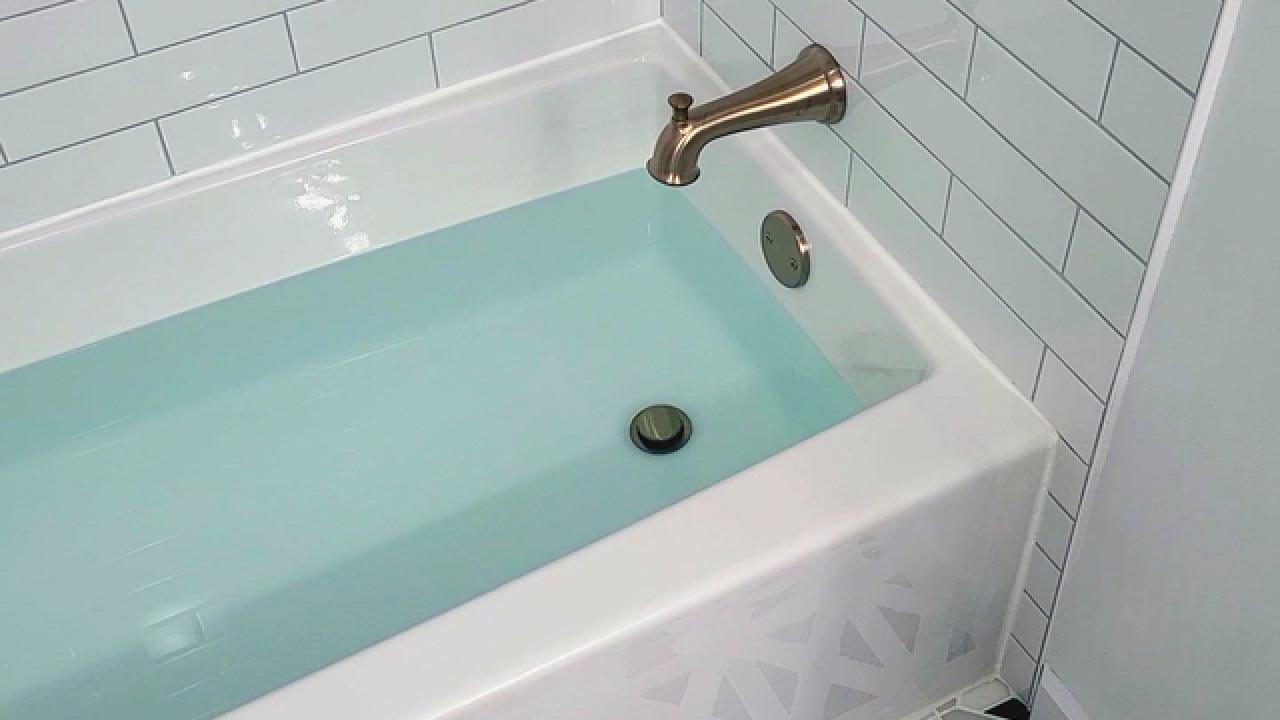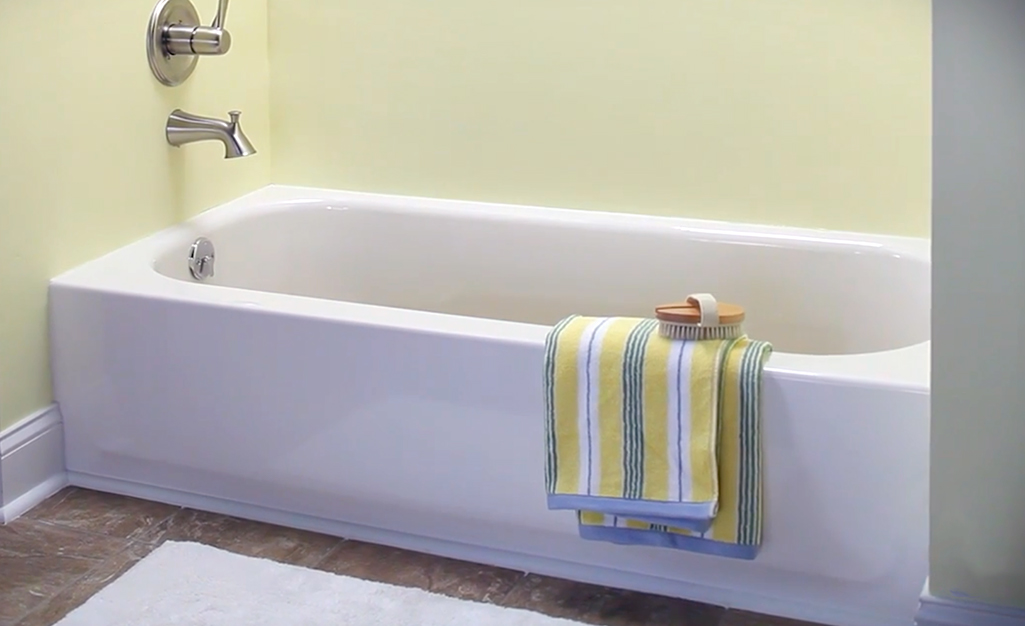Everybody may have their private opinion about Tools You Need to Install a New Bathtub .

Installing a bath tub isn't precisely rocket science, yet it does need solid plumbing, woodworking, as well as in some cases, tiling abilities. Changing an old bathtub with a brand-new one is also a reasonably difficult task. If the old tub is readily obtainable, the job can move immediately; if you have to open up a wall to remove the old bathtub and place the new bath tub, the task is much harder. In either situation, the project is within a residence handyman's skills, although you will certainly need an assistant to vacate the old tub and embeded in the new one. See to it you have certified yourself for the task and also are comfortable trying it. As opposed to employing a service provider to take over a halfway-completed job, it is far better to consider utilizing one prior to you begin. Possibilities are you might need an expert plumber to make tube links.
This write-up will certainly help you set up a new tub in your washroom if you have already gotten a brand-new tub and do not require to change the arrangement of your previous water supply pipes.
Your devices and product list should make up the following:
Removing Old Taps
If you need to change old faucets with new ones as a part of your setup, after that the first thing you should do is detach the water system. After doing so, activate the taps to drain any kind of water continuing to be in the system. The process of eliminating the existing faucets can be fairly problematic because of the limited accessibility that is often the situation.
Utilize a container wrench (crowsfoot spanner) or a faucet tool to reverse the nut that attaches the supply pipelines to the faucets. Have a cloth ready for the staying water that will certainly originate from the pipelines. As soon as the supply pipes have been eliminated, utilize the very same device to loosen up the nut that holds the faucets onto the bath/basin. You will certainly require to quit the single taps from turning during this process. When the faucets have actually been gotten rid of, the holes in the bath/basin will need to be cleaned of any old sealing compound.
Before carrying on to fit the new taps, contrast the pipeline links on the old faucets to the brand-new faucets. If the old faucets are longer than the brand-new faucets, after that a shank adapter is needed for the brand-new faucets to fit.
Suitable New Touches
If the tails of the brand-new faucets are plastic, then you will need a plastic connector to prevent damage to the thread. One end of the adapter fits on the plastic tail of the faucet as well as the various other end supplies a link to the existing supply pipes.
If you need to fit a monobloc, then you will require reducing couplers, which connects the 10mm pipe of the monobloc to the standard 15mm supply pipe.
Next off, place the faucet in the installing opening in the bath/basin guaranteeing that the washers remain in location between the tap and the sink. Secure the faucet in place with the manufacturer provided backnut. Once the faucet is firmly in position, the supply pipes can be connected to the tails of the taps. The faucets can either be linked by using corrugated copper piping or with normal faucet ports. The former kind ought to be connected to the faucet ends first, tightening up only by hand. The supply pipelines can later be attached to the other end. Tighten up both ends with a spanner after both ends have been attached.
Setting up the Bathtub
Making use of the two wooden boards under its feet, put the bathtub in the called for setting. The wooden boards are handy in uniformly spreading the weight of the bath tub over the area of the boards as opposed to focusing all the weight onto four little points.
The following goal is to make certain that the tub is leveled all round. This can be attained by checking the level and adjusting the feet on the bath tub until the level reads degree.
To install faucets, fit the bottom of the outermost flexible faucet connector to the proper supply pipe by making a compression sign up with; then do the exact same for the various other tap.
Activate the supply of water and also check all joints and also brand-new pipework for leaks as well as tighten them if needed. Load the tub as well as also inspect the overflow outlet as well as the regular outlet for leakages.
Ultimately, repair the bathroom paneling as described in the maker's user's manual. Tiling and securing around the bath tub ought to wait up until the bath tub has been utilized at the very least once as this will certainly resolve it right into its final position.
Preparing for the Setup
To start with, the supporting framework provided with the bathroom ought to be fitted (if needed) according to the supplier's instructions. Next, fit the faucets or mixer to the bath tub. When fitting the tap block, it is very important to see to it that if the faucet comes with a plastic washer, it is fitted between the bathroom and also the faucets. On a plastic bath, it is likewise practical to fit a sustaining plate under the faucets system to stop pressure on the bath tub.
Fit the flexible tap ports to the bottom of the two taps utilizing 2 nuts and also olives (sometimes supplied with the tub). Fit the plug-hole electrical outlet by smearing mastic filler round the sink electrical outlet hole, and after that pass the electrical outlet via the hole in the bathroom. Use the nut supplied by the maker to fit the plug-hole. Check out the plug-hole outlet for an inlet on the side for the overflow pipe.
Next, fit completion of the adaptable overflow pipeline to the overflow outlet. Afterwards, screw the pipe to the overflow face which should be fitted inside the bathroom. Make sure you use all of the supplied washing machines.
Attach the catch to the bottom of the waste electrical outlet on the bathtub by winding the thread of the waste outlet with silicone mastic or PTFE tape, as well as screw on the catch to the electrical outlet. Attach all-time low of the overflow tube in a comparable manner.The bath should now prepare to be fitted in its final placement.
Tiling Around the Bath tub
In the location where the bathroom fulfills the tile, it is needed to secure the joins with a silicone rubber caulking. This is essential as the fitting can move enough to crack a rigid seal, creating the water to pass through the wall surface in between the bath as well as the tiling, resulting in complications with dampness and also feasible leakages to the ceiling below.
You can choose from a variety of coloured sealers to assimilate your fixtures and fittings. They are marketed in tubes and also cartridges, as well as can securing voids approximately a size of 3mm (1/8 inch). If you have a larger gap to load, you can load it with twists of soaked paper or soft rope. Bear in mind to always fill the bath tub with water prior to sealing, to allow for the activity experienced when the bathtub is in use. The sealer can break fairly very early if you do not take into consideration this motion before securing.
Conversely, ceramic coving or quadrant ceramic tiles can be made use of to edge the bath or shower tray. Plastic strips of coving, which are easy to use and also cut to dimension, are likewise easily available on the marketplace. It is recommended to fit the tiles making use of water-resistant or water-proof sticky and cement.
Bathtub Installation
How Important Is A Bathtub To Your Home?
High-quality baths, showers, and other bathroom updates are necessary when considering a smart investment in your home. It’s a room that you go to every day and one that is constantly being used by guests.The bathroom is one of the top trafficked rooms in a home and also one of the most valuable in terms of home resale.
Install Piping Before Tub
You will be using your existing drain and waste vent system, but pipes required include the hot and cold water supply lines and a pipe leading to a shower head. A mixing valve and shower head are also needed. Air chambers may be required.
Position the Tub
Lower the tub into place so that the continuous flange fits against the wall studs and rests on 1’x4' or 2’x4' supports. Anchor the tub to the enclosure with nails or screws inserted through the flanges into the studs.
NOTE: Remember, bathtubs and shower stalls may require support framing. A bathtub filled with water is extremely heavy, so check building codes and framing support before installing the tub.
Assemble Drain Connections
Assemble the bathtub drain connections by connecting the tub overflow with the tub drain above the trap, not beyond it. The trap will have a compression fitting that screws over the arm of the overflow assembly.
Place a Pipe For the Shower Head
First, locate a brass female threaded winged fitting and attach it to a framing support via a screw or a nail. Then run a pipe up the wall for the shower head. Sweat or solder the other side of the brass fitting to the top of the pipe.
Attaching Hot and Cold Water Lines
Attach your water lines for both hot and cold by sweating these directly into the hot and cold ports of the mixing valve. The mixing valve will be how water enters the tub’s system, not by the pipes themselves.
Install the Spout
Extend a piece of 1/2 inch pipe, or whichever length is specified in the manufacturer’s instructions, for the tub spout. Sweat on a male threaded fitting at the end of the pipe or use a brass nipple of the proper length and a 1/2 inch cap.
NOTE: At this point you should have your rough-in plumbing work inspected before proceeding further.
Check For Leaks
Restore the water pressure and check the drain connection and the supply pipes for any sign of leaking.
estore the Bathroom Wall
Replace the wall with moisture-resistant drywall as a base for your wall covering. Seal the joints between the wall and your new tub with silicone caulk as protection against water seepage.
https://www.berkeys.com/2016/12/02/bathtub-installation-dallas/

Do you enjoy reading about How to Install a Bathtub Yourself? Place a comment directly below. We would be glad to listen to your ideas about this posting. We are looking forward that you come back again soon. Sharing is caring. Helping others is fun. We truly appreciate reading our article about How to Install a Bathtub Yourself.
Need Help? Hire Us Now!